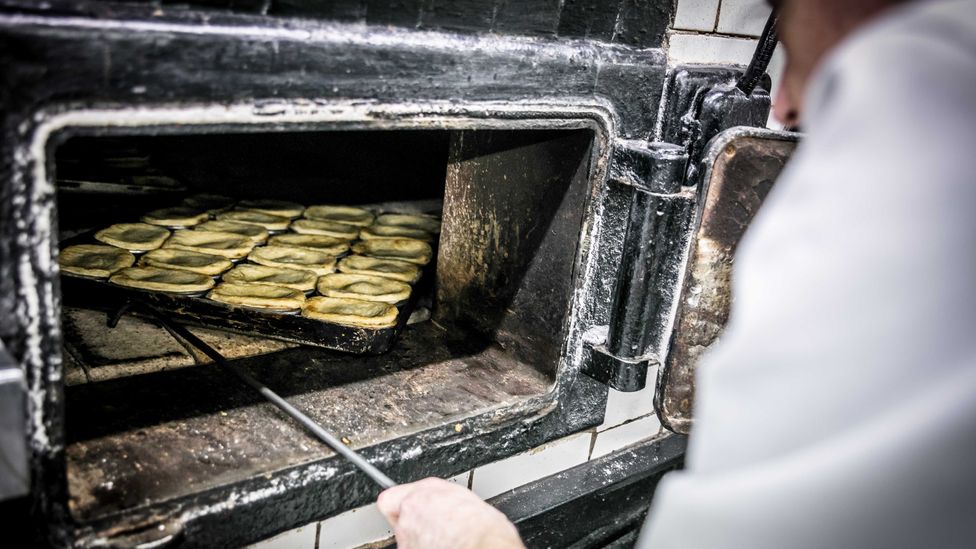In the 1740s, pleasure boaters would jauntily sail from central London down the River Thames to an islet once known as Twickenham Ait in Richmond, mooring at an inn that had built a reputation across the city for selling just one thing: eel pies.
Eel Pie House was the grand tavern's name, and punting parties would drift along the shore and then congregate for merry picnics on the riverside. Inside, the inn's chefs would skin, debone and trim batches of Thames eels into three-inch chunks, before stewing them ready for pastry and the pie oven.
Years later, the islet would be rechristened Eel Pie Island, and the eel-filled pastry's transformation from nutritious novelty to cheap, ubiquitous foodstuff was complete. Today, London's original fast food still inspires travellers to seek it out, despite the passing of hundreds of years.
When I met Rick Poole on a softly lit lunchtime in spring, he was considering this same history and how, at the turn of the 20th Century, the humble eel came to define his family's legacy. "We used to have sawdust on the floor of our shops to soak up the juice from the discarded eel bones," he recalled. "It was quite a horrible thing. Awful, really. And we had the sawdust right up until the late 1970s."
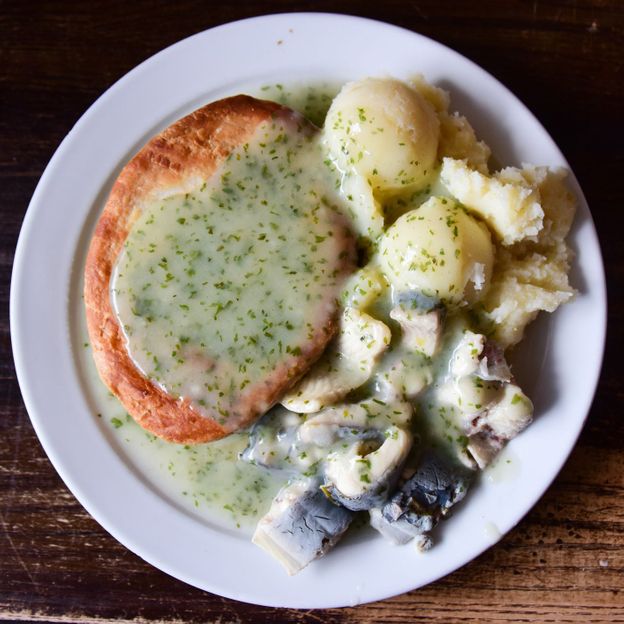
Pie with liquor and jellied eel can be still found on the menu at London's eel and pie houses (Credit: Sergio Amiti/Getty Images)
Poole is director of M. Manze, London's oldest surviving eel and pie house – some say the oldest in the world – and great-grandson of original owner, Michele Manze. A sign outside the cafe proclaims "Manzes will change your life!" and the frill-free business has been serving customers since 1902. (London's first eel house was opened in 1892 by one Robert Cooke, who then sold it to his son-in-law – Michele Manze.)
By the 1930s, a total of 14 eel and pie shops carried the M. Manze name across London, but these days, only three remain, with the traditionally fronted building with dark green awning and Union Jack flags at 87 Tower Bridge Road the oldest survivor. And, according to its regulars, it is London's original fast food take-away.
Walking into M. Manze's for the first time feels like a London from another time. Poole uses the term "intimidating". There are communal marble-topped tables, dark wood pew benches and distinctive green and white wall tiles. A counter is bookended by trays of self-serve cutlery and bottles of chilli vinegar on one side and a cash register on the other. From mid-morning until 18:00, and later at the weekends, staff take orders of stewed eels, jellied eels (set in viscous aspic jelly made from eel bones), and – the favourite these days – minced beef meat pies served with mash and liquor. Originally eel gravy, this "liquor" is now a soup-thin, seaweed-green parsley sauce.
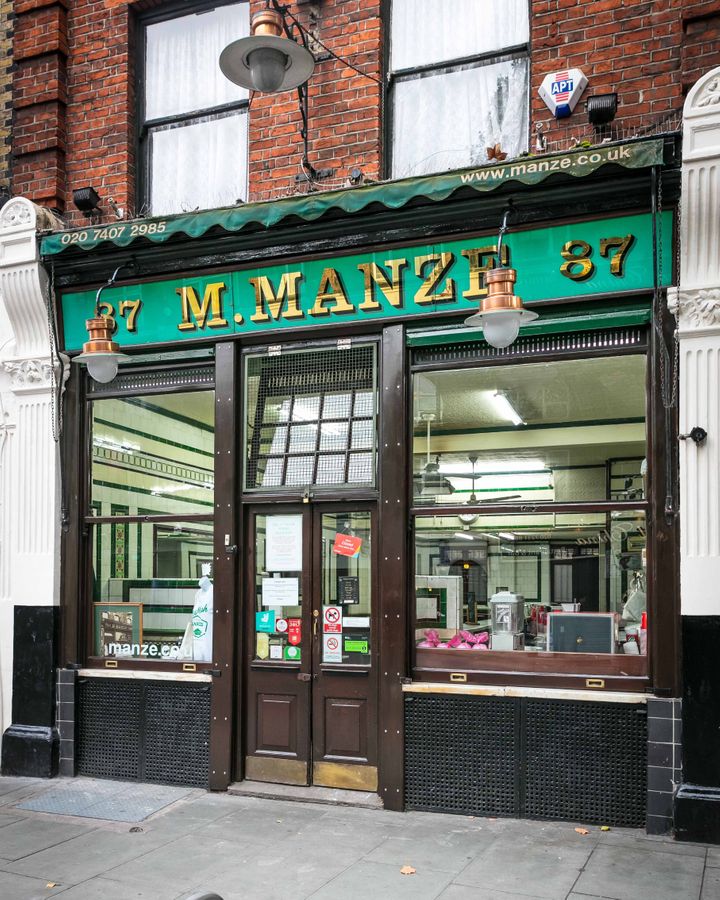
M. Manze is London's oldest surviving eel and pie house (Credit: M. Manze)
Times, as well as tastes, have changed. During the 1970s, eels were a stock in trade of market stalls and unassuming Cockney cafes throughout south and east London, but now this time-honoured meal is dying a slow death.
We're still catering for hardcore Londoners who love the tradition, but London has gentrified and people are increasingly squeamish – they're wary of trying eel
Eel pies are no longer made or sold, and sales of both jellied and stewed eels are in steep decline. M. Manze's once processed between 60-80lb of eel per week, selling 700 boxes or portions every weekend, but demographics have changed and the business now processes and sells just a third of what it once did, with the eel now sourced from freshwater Lough Neagh in Northern Ireland.
"We're still catering for hardcore Londoners who love the tradition, but London has gentrified and people are increasingly squeamish – they're wary of trying eel," said Poole.
All Londoners, once upon a time, would have eaten the ray-finned fish in some shape or form. In the Victorian era, the snake-like, catadromous fish was hawked as if a hot dog from small pushcarts laden with portable ovens. Eels were one of a few species that could survive in the heavily polluted Thames and made a cheap, filling and protein-packed substitute for meat. At its peak in the mid-19th Century, up to 500 eel sellers could be found at London's Billingsgate Market, which today remains the UK's largest inland fish market. In 1839, novelist Charles Dickens took the young Miss Morleena Kenwigs down the Thames for a picnic in the pages of his novel Nicholas Nickleby. Her destination? Eel Pie Island, of course.
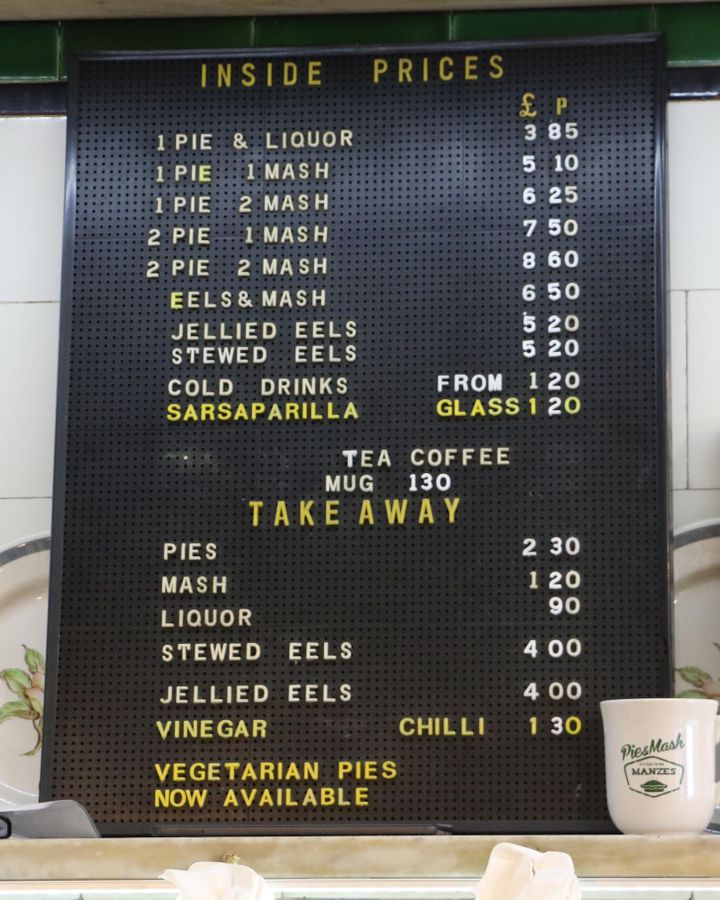
Once a staple food in London, eel has fallen out of favour in recent decades (Credit: Mike MacEacheran)
But even before this period, eel had always been hugely important to the city. It was the chief ingredient in 16 recipes in The Accomplisht Cook by Robert May. Published in 1660, it was the largest cookery book produced in England up to that time. And between the 11th and 14th Centuries, eels helped power London's medieval economy and the idea of accepting eel as a rent or tax payment was commonplace; more than 540,000 eels were paid as rent across England every year in the 11th Century alone.
"Eels were a currency for some 500 years and appear repeatedly in the Domesday Book [Britain's earliest public record], which was originally published back in 1086," said eel expert Philippa Nicholls. "They've long played an important role in English life in more ways than people realise."
Today, Nicholls is Community Eel Officer for Thames 21, a charity working with communities to improve London's waterways for people and wildlife. And while the European eel was once commonplace in the Thames River Basin, she says it is almost invisible today because the species is critically endangered.
"European eels once thrived in London's rivers, but the number of young joining the adult populations has dropped dramatically since the 1980s," Nicholls said. "Data suggests the numbers arriving each year has decreased by more than 90% compared to the 1960-1979 average."
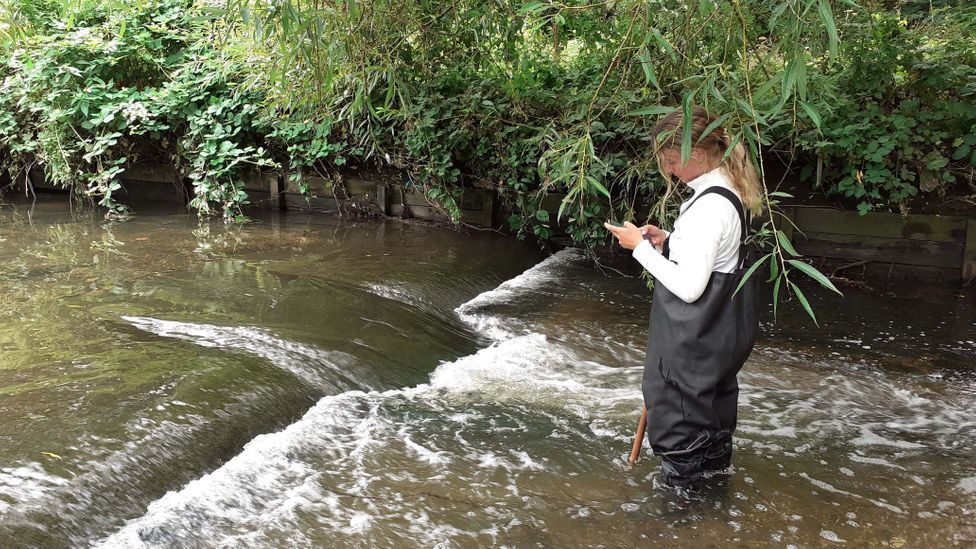
European eels are critically endangered with conservation projects monitoring their numbers (Credit: Thames 21/Thames Catchment Community Eels Project)
This is a familiar lament in wildlife terms. Several factors have been identified as potential causes of the decline and they include the loss of habitat, pollution, barriers to migration and exploitation from commercial and recreational fishing. The European eel is also the only critically endangered species in the UK that is still fished without a licence.
"Historically, the eel run each April used to turn the margins of the River Thames black," explained Joe Pecorelli, conservation programme manager at the Zoological Society of London. "I don't think people can really imagine the number that used to migrate up the Thames."
Historically, the eel run each April used to turn the margins of the River Thames black
Spearheading conservation efforts in recent years, both Pecorelli and Nicholls now help marshal hundreds of volunteers and citizen scientists every year as part of the Thames Catchment Community Eels Project, which improves the upstream migration of the at-risk species.
To date, 18 sites – the largest elver (juvenile eel) monitoring scheme within a single catchment in the UK – have been created, and 1,100 volunteers have been enlisted to identify, assess, map and mitigate barriers to eel migration before the fish returns to the Sargasso Sea in the Atlantic Ocean where it spawns.
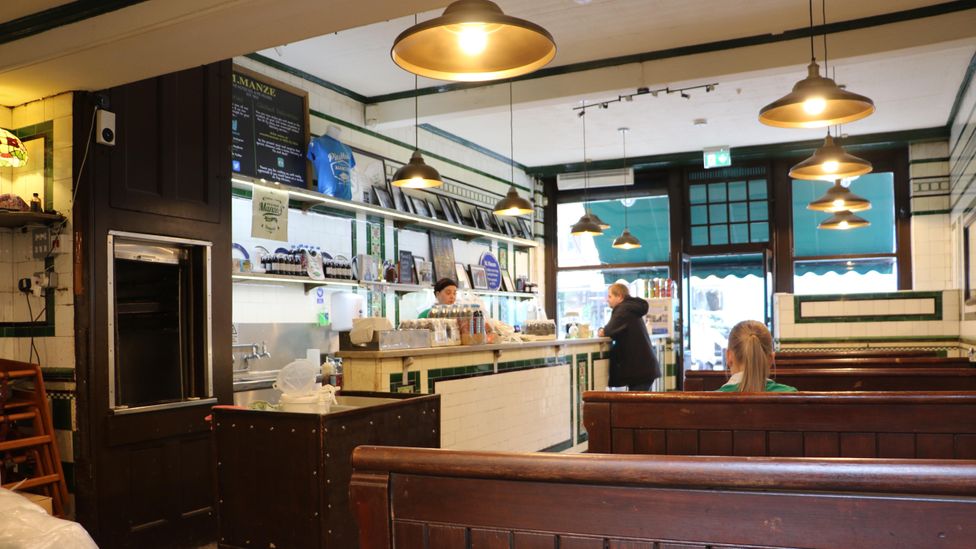
M. Manze remains virtually unchanged, although the pies are now made with meat (Credit: Mike MacEacheran)
"This is a species with a serious PR problem," Pecorelli added. "It's not a fluffy panda or a pangolin, but the facts don't lie: there is more illegal trade of eel than of any other creature because of the lucrative food market for it, particularly in Asia. Collectively, we need to do more to help safeguard the future of this iconic River Thames species."
Talk of what lies ahead for the eel also plays on the mind of London's last eel and pie shop proprietor back at M. Manzes. "London is full of tradition and eels will always be part of its story," said Poole. "They'll still stand up the test of time. I'm sure of it."
Soon after, the early evening rush was over and the patrons had gone. The cooks and servers left soon after and the doors were locked, leaving the eel and pie shop in stasis and looking the same as it did when it first opened more than a century ago. Only the scent of pastry was left – and it lingered on the air.
---
Join more than three million BBC Travel fans by liking us on Facebook, or follow us on Twitter and Instagram.
If you liked this story, sign up for the weekly bbc.com features newsletter called "The Essential List". A handpicked selection of stories from BBC Future, Culture, Worklife and Travel, delivered to your inbox every Friday.
